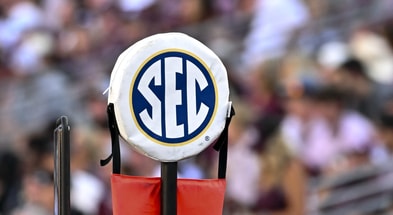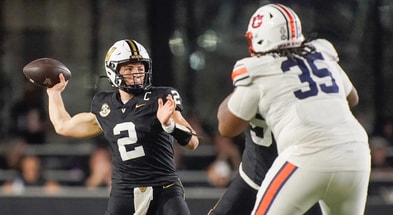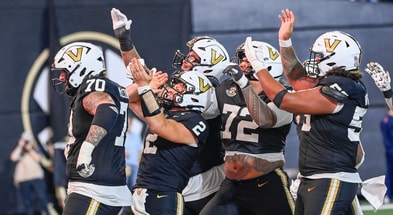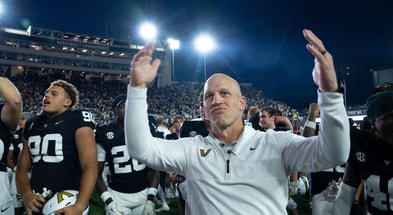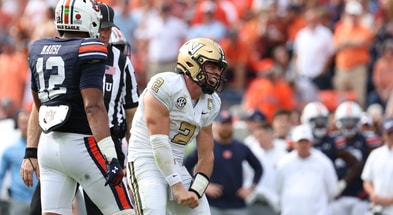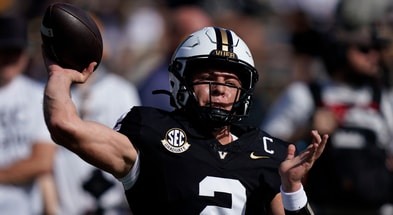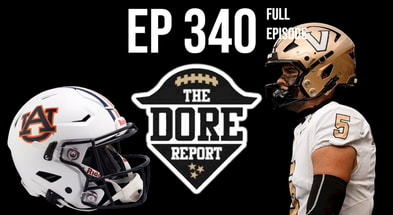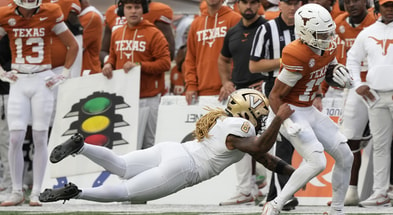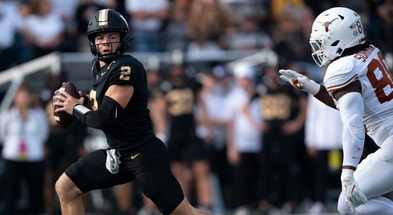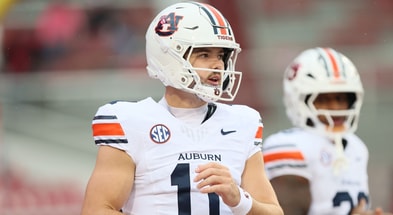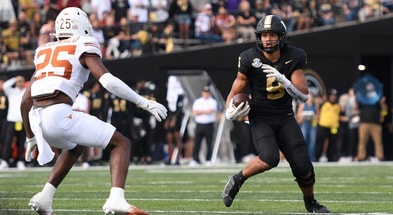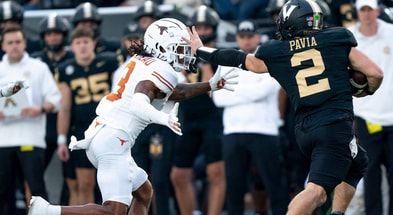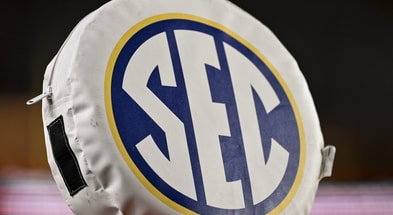CFP Math 101: What Vandy Needs to Happen
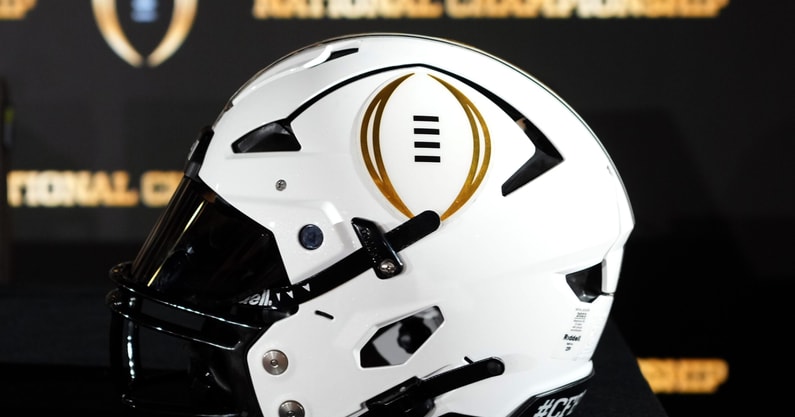
If Vanderbilt finishes 10–2, the big question in the new twelve-team College Football Playoff isn’t “are they good enough?” It’s “Is there enough room?”
Right now, BYU and Utah are both sitting ahead of Vanderbilt in the CFP rankings. BYU is #12, Utah is #13, and Vanderbilt is #14. On paper, that puts Vanderbilt behind both in the race for the last few playoff spots. However, once you factor in how each team finishes, who they play, and the strength of those opponents according to FPI, the picture changes significantly.
To see why, I need to discuss what FPI is briefly, then look at the remaining schedules, and finally run the numbers to determine what happens if Vanderbilt, BYU, and Utah all land where I’ve specified.
What the Hell is FPI?
FPI (Football Power Index) is ESPN’s way of putting a number on how good a team is. It’s not a poll, and it’s not about style points. It’s more like a built-in Vegas line. You can think of it this way: if this team played an average FBS team on a neutral field, how many points would they win or lose by?
If a team has an FPI of +10, the model thinks they’d beat an average team by 10 points on a neutral field. If a team has an FPI of +3, they’d be expected to win by a field goal. If a team has an FPI of –4, they’d be a four-point underdog.
To determine this, FPI examines the efficiency of the offense, the frequency of defensive stops, the difficulty of the schedule, the quality of opponents, and other factors. It doesn’t just count wins; it looks at how they played and who they played.
The playoff committee doesn’t just rank teams by FPI, but it uses it as context. When they’re comparing a 10–2 SEC team to a 10–2 Big 12 team, for example, FPI helps them see who actually played at a higher level all year. It is essential to remember that FPI is fluid and changes on a week-by-week basis.
12 Team Playoff Rules (Dumb)
In the new format, there are twelve spots and five go to conference champions while the other seven go to the seven highest-ranked teams that did not win their conference championships. The four highest-ranked teams overall get first-round byes. Seeds five through twelve play in the first round, with five through eight hosting nine through twelve.
One other rule is important: if the fifth-best conference champion is ranked outside the top twelve, they still get in and are placed at the 12-seed. That usually applies to a Group of Five champion. In practice, that means one of the twelve spots is “reserved,” regardless of whether the team is truly of top-twelve quality or not.
I ran the numbers using a logistic regression model. Basically, this analysis is commonly used to predict the probability of a binary outcome (playoff appearance or no playoff appearance) using one or more independent variables. I added one more big condition: teams currently ranked 1–9 win out. That locks nine teams ahead of Vanderbilt, no matter what.
The Remaining Schedules and FPIs
Now to the meat of it: who everyone still has to play, and how good those opponents are according to FPI. Here are the FPI numbers for the remaining games:
BYU has Cincinnati (FPI 7.6, #42), UCF (FPI 1.1, #61), and then, in the Big 12 title game, Texas Tech (FPI 20.4, #8), and we’re assuming BYU loses that championship game.
Utah has Kansas State (FPI 7.1, #43) and Kansas (FPI 5.6, #49).
Vanderbilt has Tennessee (FPI 15.9, #16) and Kentucky (FPI 8.7, #33).
If we average those opponent FPIs to get a rough sense of remaining difficulty, we get this:
For BYU:
Average FPI = (7.6 + 1.1 + 20.4) / 3 = 29.1 / 3 ≈ 9.7
For Utah:
Average FPI = (7.1 + 5.6) / 2 = 12.7 / 2 = 6.35
For Vanderbilt:
Average FPI = (15.9 + 8.7) / 2 = 24.6 / 2 = 12.3
So, Vanderbilt has the toughest remaining schedule of the three, on average. Beating teams ranked #16 and #33 in FPI does more for your résumé and for the committee’s perception than beating #42 and #61, and it certainly beats Utah’s closing stretch against #43 and #49.
BYU will get credit for playing a top 10 Texas Tech team in the title game, but in our scenario, they lose that game. That means they finish with at least two losses and no conference championship. Utah will also finish with at least two losses and no conference championship. Both of those matter a lot in the final comparisons.
Where the Three Teams Stand Now
Right now, BYU is #12, Utah is #13, and Vanderbilt is #14 in the CFP rankings. That means as of today, Vanderbilt is chasing them, not the other way around. But if we follow the scenario to the end: BYU beats Cincinnati and UCF (solid but not elite wins), then loses to a very strong Texas Tech in the Big 12 championship. That gives them at least two losses and no title. Utah beats Kansas State and Kansas, both good but not great teams in FPI, and ends the year with at least two losses and no trip to the conference championship. Vanderbilt, meanwhile, beats Tennessee (FPI #16) and Kentucky (FPI #33), both better than any of the non-Texas Tech opponents on BYU’s or Utah’s remaining schedules, and finishes 10–2 in the SEC.
When the committee sits down, that’s precisely the kind of profile they like: a strong record, big wins, brutally hard schedule, and no embarrassing losses. That combination is why a 10–2 SEC team almost always lands in the top twelve in a normal year.
It’s Number Crunchin’ Time
To put a number on Vanderbilt’s chances, I treated their final ranking as a probability distribution, given all those conditions. Because BYU and Utah are currently ahead but will pick up more “baggage” (extra losses, no titles, weaker closing opponents). At the same time, Vanderbilt would take out Tennessee and Kentucky, the most likely outcome is that Vanderbilt jumps both by the time the final rankings come out.
A reasonable way to approximate Vanderbilt’s final ranking chances looks like this: about a 30 percent chance they end up ranked 9th, 35% chance 10th, 20% chance 11th, 10% chance 12th, and 5% chance 13th. That’s centered around the back of the top ten. If you multiply those percentages by the ranking numbers, you get an average expected rank of:
E(R) = 0.30(9) + 0.35(10) + 0.20(11) + 0.10(12) + 0.05(13)
Next, I calculated it:
0.30(9) = 2.7, 0.35(10) = 3.5, 0.20(11) = 2.2, 0.10(12) = 1.2, 0.05(13) = 0.65
Add those up:
E(R) = 2.7 + 3.5 + 2.2 + 1.2 + 0.65 = 10.25
So, on average, Vanderbilt ends up roughly #10.
To convert that ranking into a playoff probability, I used a straightforward model based on past data that links the final ranking to the odds of making the twelve-team field. The formula is:
Logit(p) = 6.21 – 0.52R, p = 1/(1+e -Logit(p ))
Now plug in the possible rankings.
For 9th:
Logit(p9) = 6.21 – 0.52(9) = 1.53,
p9 = 1/(1+e-1.53) ≈ 0.822
For 10th:
Logit(p10) = 6.21 – 0.52(10) = 1.01,
p10 = 1/(1 + e–1.01) ≈ 0.733
For 11th:
Logit(p11) = 6.21 – 0.52(11) = 0.49,
p11 = 1/(1+e–0.49) ≈ 0.620
For 12th:
Logit(p12) = 6.21 – 0.52(12) = -0.03,
p12 =1/(1 + e0.03) ≈ 0.493
For 13th:
Logit(p13) = 6.21 – 0.52(13) = -0.55,
p13 = 1/(1 + e0.55) ≈ 0.366
Now, I weighted each of those probabilities by the chance Vanderbilt finishes in that spot:
P(CFP) = 0.30(0.822) + 0.35(0.733) + 0.20(0.620) + 0.10(0.493) + 0.05(0.366).
Work it out:
0.30(0.822) = 0.2466,
0.35(0.733) = 0.2566,
0.20(0.620) = 0.1240,
0.10(0.493) = 0.0493,
0.05(0.366) = 0.0183
Add them:
P(CFP) = 0.2466 + 0.2566 + 0.1240 + 0.0493 + 0.0183 = 0.6948.
So, Vanderbilt’s playoff odds in this specific world are about 69–70%.

WTF Does That Mean
Right now, BYU and Utah are ahead of Vanderbilt in the CFP rankings. If you stopped the season today, Vanderbilt would be out. But the way the rest of the season plays out matters a lot more than the snapshot.
If BYU beats decent but not great teams (Cincinnati and UCF) and then loses the Big 12 title game, and Utah finishes with at least two losses and no conference title. At the same time, Vanderbilt closes 10–2 with wins over Tennessee and Kentucky, the balance flips. Vanderbilt’s stronger wins and tougher schedule would likely push them ahead of both BYU and Utah on the final board.
Even in the harsh world where the current top nine never lose and a G5 champ takes one spot, a 10–2 Vanderbilt would still have roughly a 70% chance of making the playoff. They would almost certainly be on the road in the first round, probably as something like a 9, 10, or 11-seed. But they’d be in the bracket more often than not.
So yes, BYU and Utah are ahead of Vanderbilt today. But if things unfold as I have laid out, the numbers suggest that Vanderbilt’s path is not only alive, but also favorable, even in a stacked national landscape. If you strip away the noise and look at the numbers, the story is pretty simple: for Vanderbilt to feel genuinely safe in the twelve-team playoff race, they need to win out, and they really need BYU and Oklahoma to each drop at least one more game.
NOTE: Oklahoma fits into this picture as another direct competitor in the at-large pool. If Oklahoma also picks up a third loss, its résumé becomes clearly weaker than 10–2 Vanderbilt, and the model shifts more weight toward Vanderbilt finishing 9th or 11th rather than 11th or 13th. In other words, every extra loss for a team currently clustered around that 9–15 range pushes Vanderbilt’s probability curve up.



